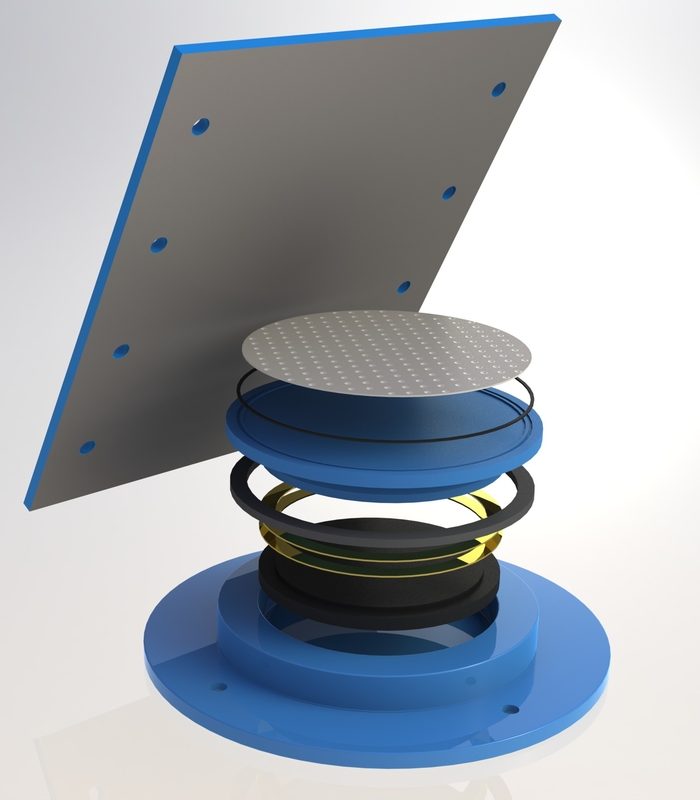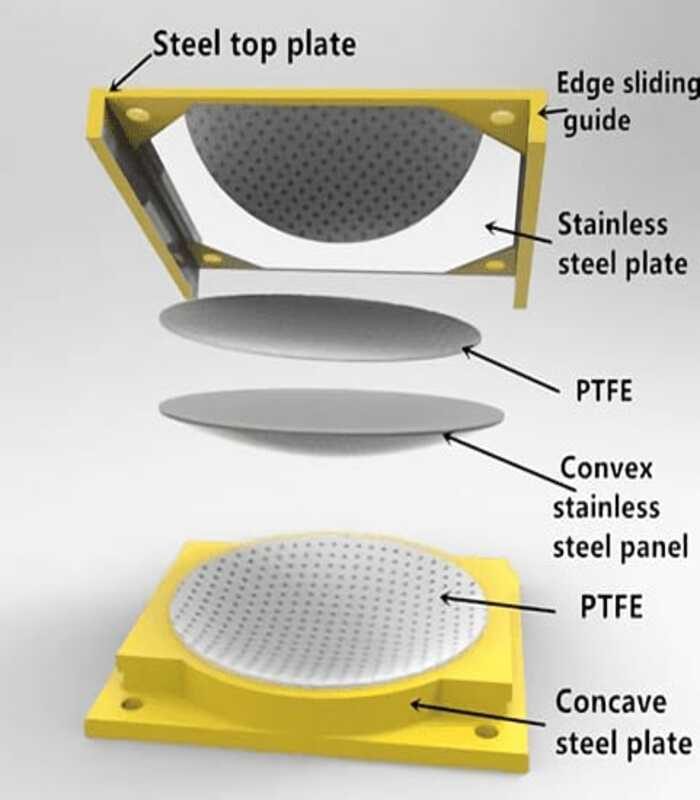Bridge Bearings
Pot bearing, also known as pot-ptfe bearing, with elastomeric bearing pad embedded inside of the steel plate, can be divided into fixed pot bearing, guided pot bearing and free sliding pot bearing. Pot bearings are special types of bridge bearings for taking large loads, large horizontal displacements and large rotation requirements in confined areas. The loading capacity of elastomeric bearings is limited, while pot bearings solved this problem, thus pot bearings are often regarded as suitable for use when bridges need large bearing reactions.
Fixed Bearing (Fixed pot bearing) is unmoved in all directions. Under loads, the elastomeric bearing pad behaves likes an incompressible confined fluid which enables the rotations on any axis.
Free Bearing (Free sliding pot bearing) can be movable in all directions. The added PTFE and stainless steel sliding surface between the piston and the sole plate creates a bearing assembly that allows horizontal movement in any direction.
Guided Bearing (Guided pot bearing) with steel guide edge can be only moved in one direction. The stainless steel slide and PTFE slide further reduce the friction coefficient and guided pot bearing is used best when horizontal loads are relatively small (less than 20% of vertical Load).
Application
Pot bearings are suitable for locations where low-profile, high-load bearing devices are required. And they are especially suited for curved or skewed bridges and other complex structures where the direction of rotation varies or cannot be precisely determined.
Spherical bearing, also called spherical bridge bearing, is one type of bridge bearings with large rotation capacity. Similar with pot bearing, spherical bearing also can be divided into three types: fixed spherical bearing, guided spherical bearing and free sliding spherical bearing. With high strengthened steel body, spherical bearing is especially designed for high vertical, horizontal and lateral loads and where large rotational structural displacements need to be accommodated.
Working principle of spherical bearing
Spherical bearing is formed by top steel plate, stainless steel slide, PTFE slide, convex plate, curved PTFE and concave plate. The sliding of convex plate and concave plate can accommodate the structural rotations of the beam end. The stainless steel slide and PTFE slide can further reduce friction coefficient, thus displacement of expansion and contraction can be accommodated. While, depending on whether the spherical bearing is fixed, guided or free sliding, the vertical loads, horizontal forces, longitudinal movements or transverse movements can be accommodated. What’s more, the guided bar and the restraining ring also can transmit the horizontal forces. Thus, spherical bearings are especially suitable for more complex bridges.
Pin Fixed Bearing, A pin bearing is a type of fixed bearings that accommodates rotations through the use of a steel. Translational movements are not allowed. The pin at the top is composed of upper and lower semicircularly recessed surfaces with a solid circular pin placed between. Usually, there are caps at both ends of the pin to keep the pin from sliding off the seats and to resist uplift loads if required. The upper plate is connected to the sole plate by either bolting or welding. The lower curved plate sits on the masonry plate. Rotational Movement is allowed. Lateral and Translational Movements are Restricted.
Metallic guided bearing, consisting of a sliding assembly with restraint along the desired direction to bears and transmit horizontal force and capable of allowing movement in a direction perpendicular to the direction of horizontal force.



